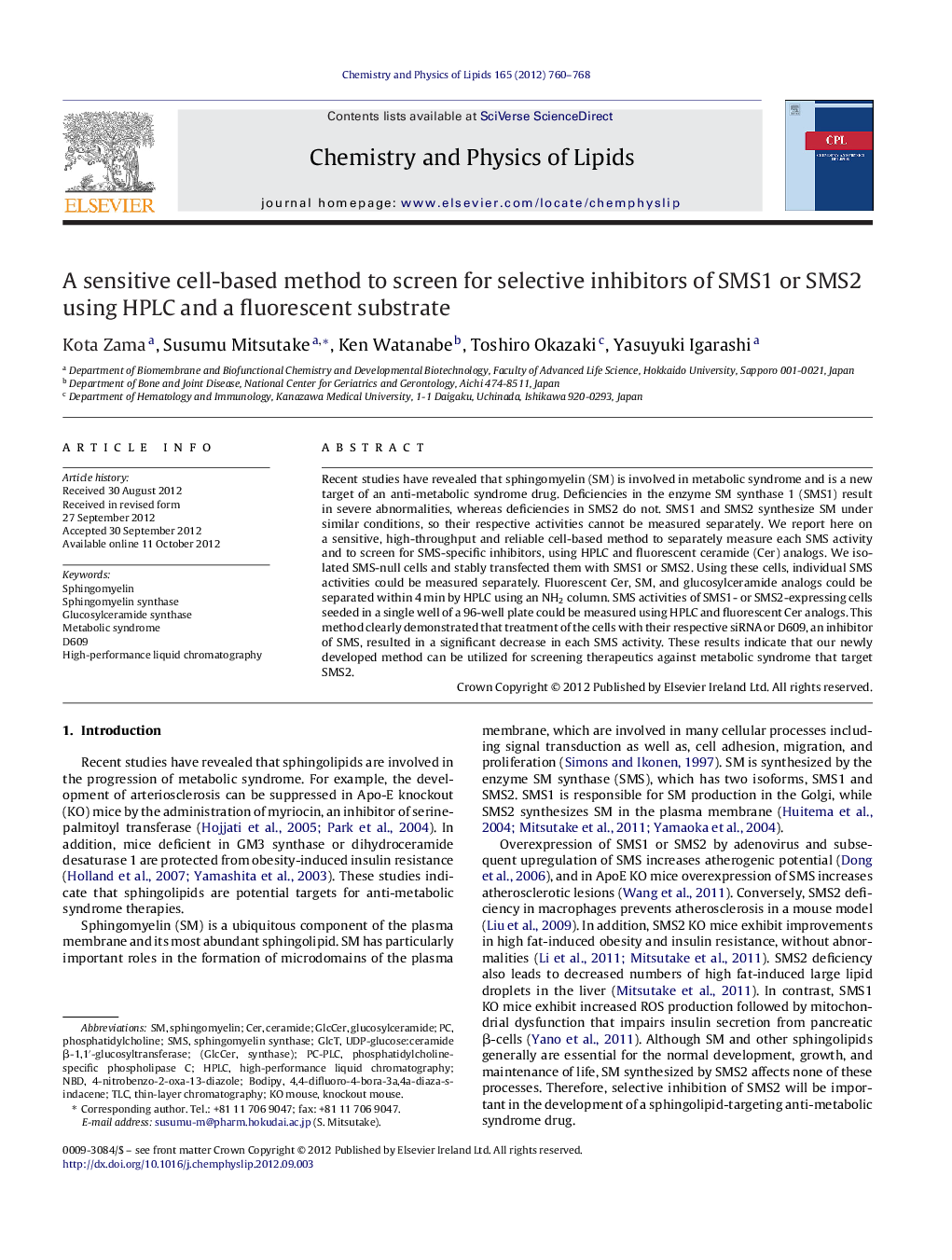| Article ID | Journal | Published Year | Pages | File Type |
|---|---|---|---|---|
| 1253318 | Chemistry and Physics of Lipids | 2012 | 9 Pages |
Recent studies have revealed that sphingomyelin (SM) is involved in metabolic syndrome and is a new target of an anti-metabolic syndrome drug. Deficiencies in the enzyme SM synthase 1 (SMS1) result in severe abnormalities, whereas deficiencies in SMS2 do not. SMS1 and SMS2 synthesize SM under similar conditions, so their respective activities cannot be measured separately. We report here on a sensitive, high-throughput and reliable cell-based method to separately measure each SMS activity and to screen for SMS-specific inhibitors, using HPLC and fluorescent ceramide (Cer) analogs. We isolated SMS-null cells and stably transfected them with SMS1 or SMS2. Using these cells, individual SMS activities could be measured separately. Fluorescent Cer, SM, and glucosylceramide analogs could be separated within 4 min by HPLC using an NH2 column. SMS activities of SMS1- or SMS2-expressing cells seeded in a single well of a 96-well plate could be measured using HPLC and fluorescent Cer analogs. This method clearly demonstrated that treatment of the cells with their respective siRNA or D609, an inhibitor of SMS, resulted in a significant decrease in each SMS activity. These results indicate that our newly developed method can be utilized for screening therapeutics against metabolic syndrome that target SMS2.
► We developed a method to separately characterize SMS1 and SMS2 activities. ► This method could be applied to screen for selective inhibitors against each SMS. ► This method is simple, highly sensitive, and high-throughput. ► D609 inhibits not only SMS1 and SMS2 but also GlcT.
